The loading and discharging of cargo is greatly eased with the help of the proper equipment for its handling. In this chapter we will be discussing the various items of equipment and their uses.
Rope slings.
Rope slings are constructed by joining the ends of a piece of 25 to 30 mm rope, approximately 10 to 12 metres in length, with a short splice. It is used to lift bags, baled goods, barrels and cases.
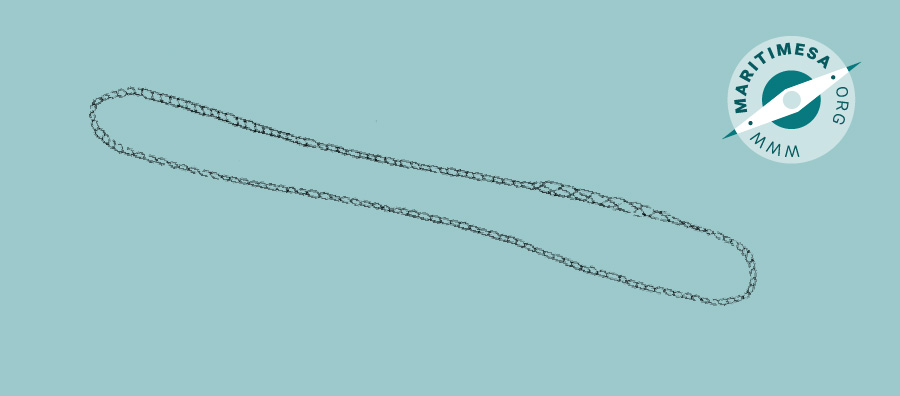
Example of a rope sling.
Canvas slings.
This is constructed by sewing a piece of canvas between the parts of a rope sling. It is used for lifting bagged grain, rice, coffee and similar cargoes where the contents of the bag when squeezed, could rupture the bag. The bags are spread more evenly and thus the chances of splitting are reduced.

Example of a canvas sling.
Board slings.
This is similar to the canvas sling, but wood is used in place of canvas. It is used for slinging fragile cargo such as bags of cement.
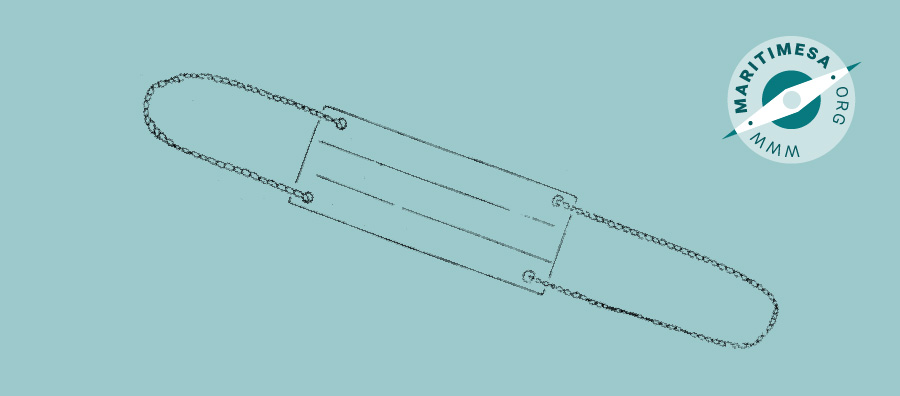
Example of a board sling.
‘Snotter’
This could be made out of either rope or wire by forming an eye at each end of a 16 to 20mm wire or 50 to 60 mm rope, 4 to 6 metres in length. It is used for slinging cases, bales, wet hides and timber.
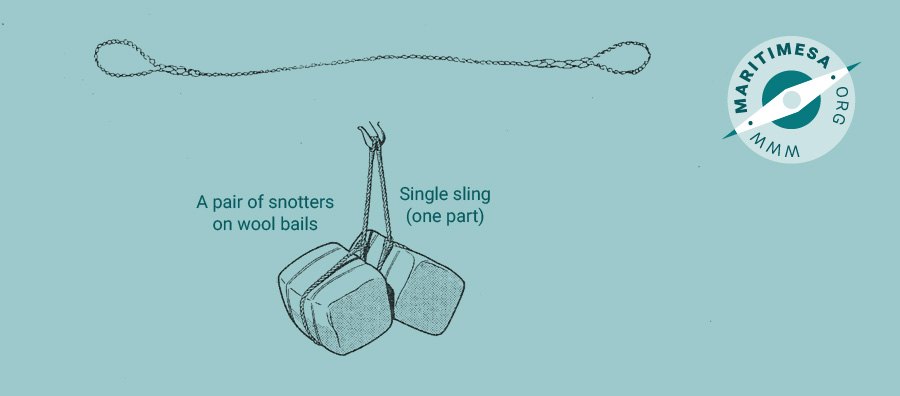
Example of and use of snotters.
Single chain sling.
This consists of a length of chain, with a large ring at one and a hook or smaller ring at the other end. It is used for lifting heavy logs, bundles iron and most steel work. Care must be taken that no kinks are allowed to form in the chain as goods are being lifted.
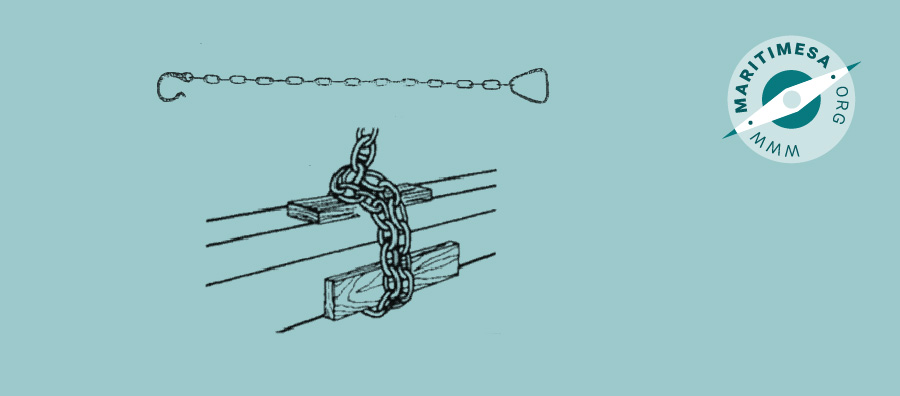
Example of and use of chain slings.
Double sling.
This consists of two chain slings, each chain can be placed around the article and then the hooks are either hitched onto the chains or into the ring.
Collar sling.
One end link or a loop of the chain can be passed through the other end link when slinging.

Example of a collar sling.
Nylon strop.
Used the same way as the snotter, but causes less damage to the cargo. It is used for large parcels of cargo.
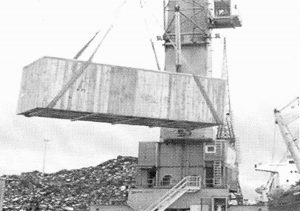
Example of a nylon strop.
Plate clamp/plate hooks.
Plate hooks are special hooks designed to fit over the edges of steel plates. On the lifting side of these hooks, a special lever is attached by pivot to the hooks. The levers have a lifting ring on one side to which the lifting lugs are pivoted.
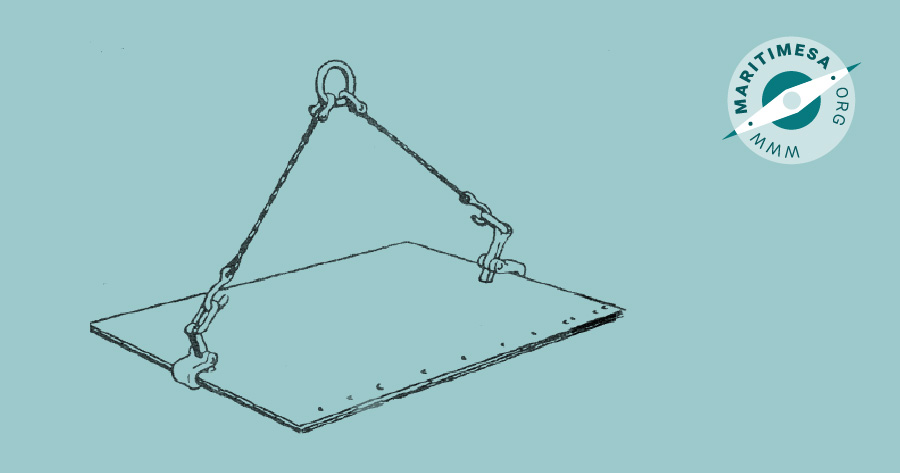
Example of plate hooks.
Cargo nets.
These are nets made out of rope or wire with large eyes at the four corners, or one large loop at each side for lifting. Used for small packages, bags, etc.
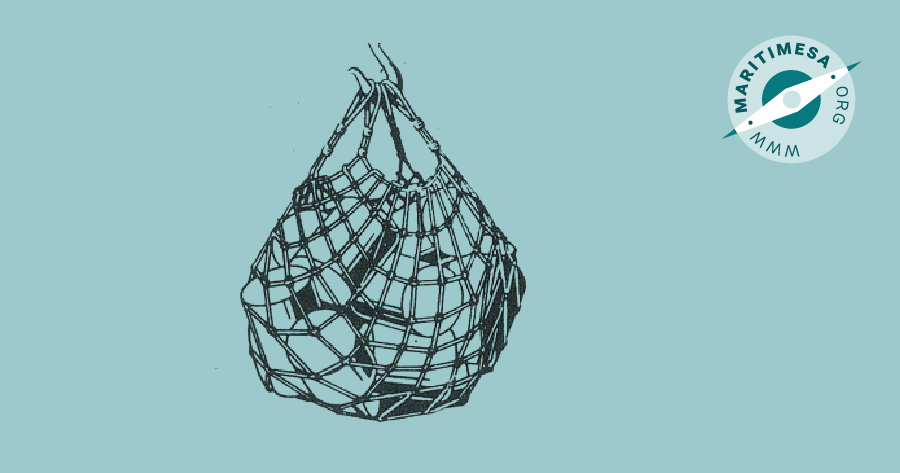
Example of a cargo net.
Car slings.
There are many types of car slings. All are designed for the rapid handling of cars and lorries. It is essential that spreaders are fitted, otherwise there is a possibility that the bodywork of the vehicle will be set in. When heavy lorries and busses or big chassis are to be slung, wire rings are usually attached direct to the end of the axles.
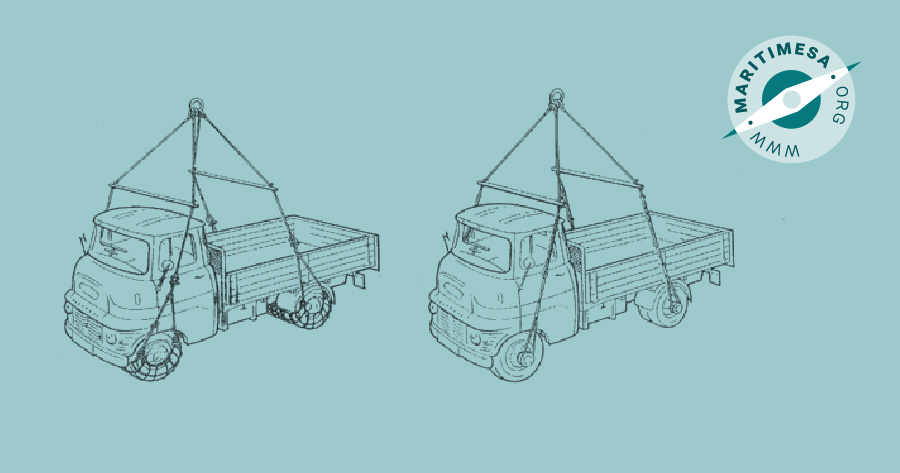
Examples of car slings.
Can hooks.
Can hooks are designed to slip under the lip of the drum or barrel. There are frequently four or five sets of hooks on a ring, which enables drums and barrels to be landed rapidly. They are not recommended for handling heavy barrels as there is a possibility that the staves will be pulled out.
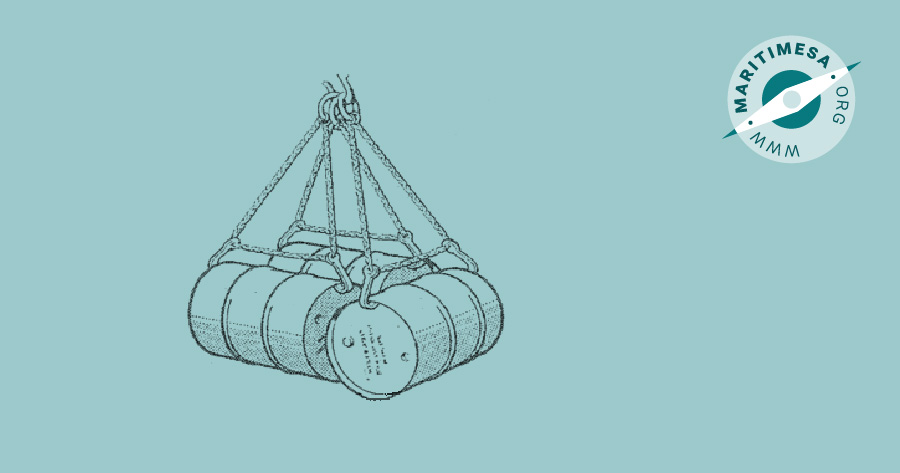
Examples of can hooks.
Cotton hooks.
These are hooks with sharp ends attached to a ring by wire. They are used for bales of cotton and similar materials, the sharp hooks penetrate the bale.
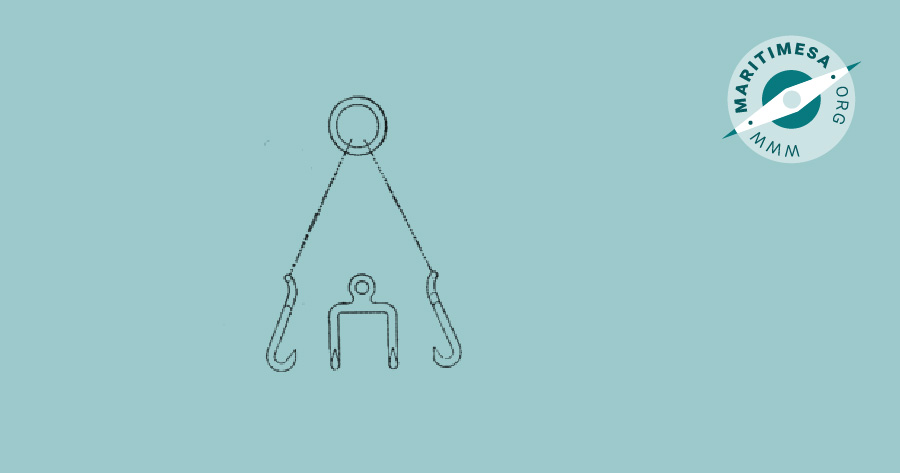
Example of cotton hooks.
Case hooks.
These are hooks with a flat surface fitted with spikes on one side. The spikes dig into the wooden cases.
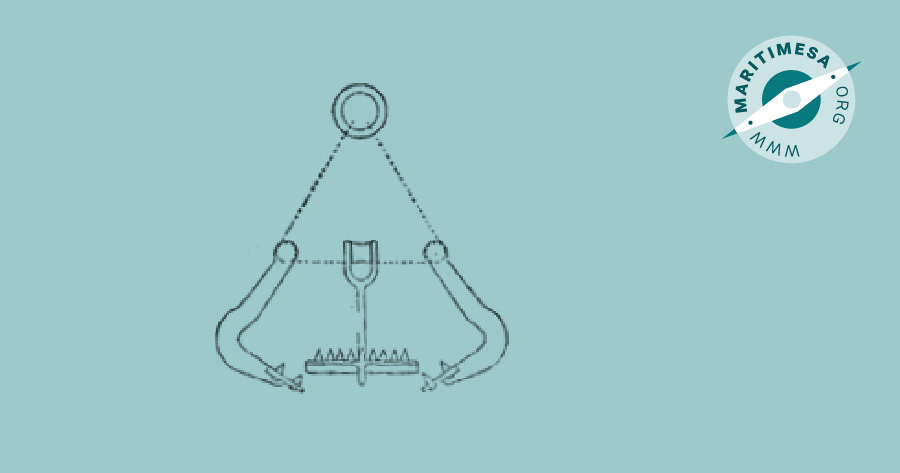
Example of a case hook.
Lead hooks.
Used for rolls of lead. The straight parts go into the rolls.
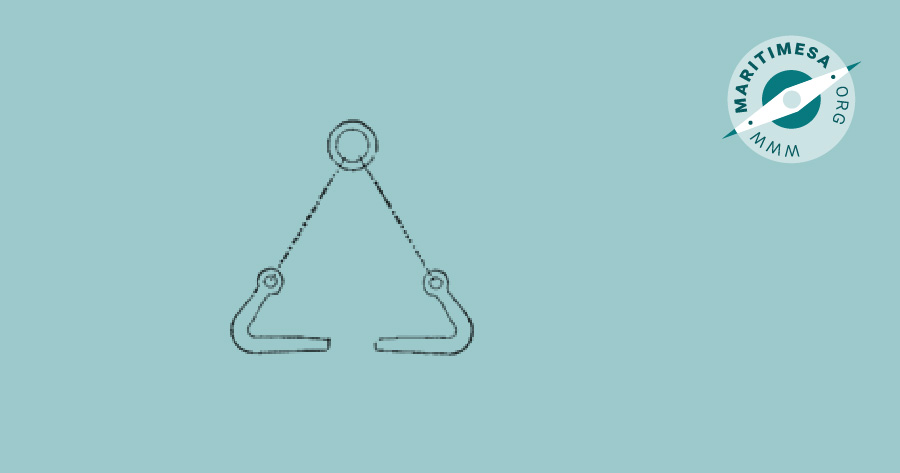
Example of lead hook.
Pallets.
They are wood or metal “platforms” specially designed to be handled by fork-lift trucks. Normally loaded with cartons, which may or may not be unloaded into the hold. If not unloaded, the whole pallet and cartons are unloaded at the destination.
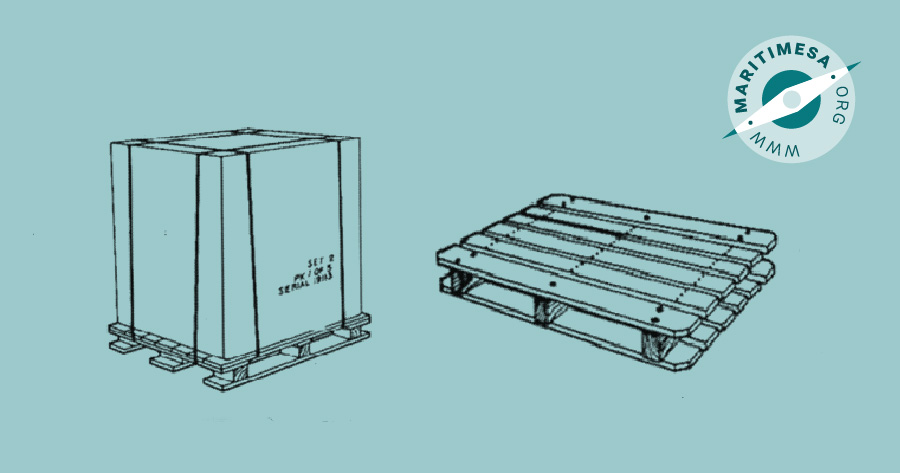
Examples of pallets.
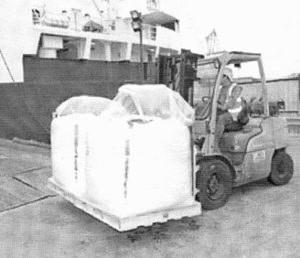
Loading pallets.
Trays.
The trays may be square, rectangular or round. They are slung by short pieces of rope, called legs, attached to the corners. They are used for small cases and drums.
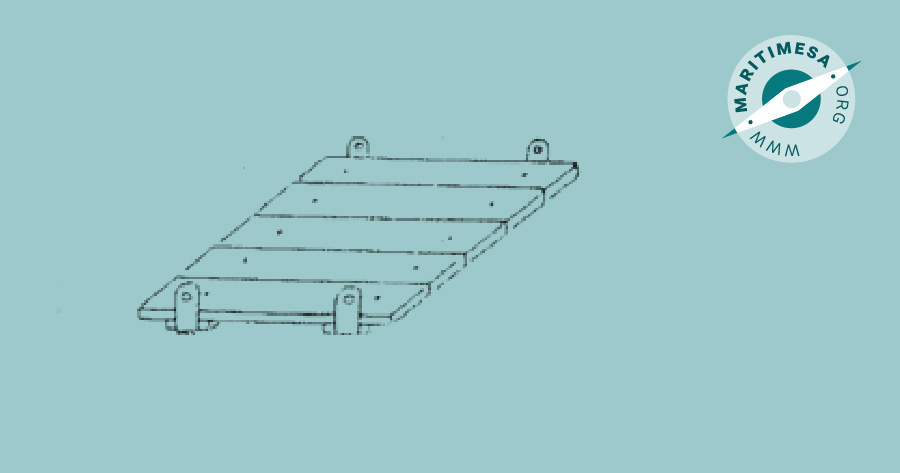
Example of a wooden tray.
Boxes.
They are similar to trays but a wooden side is fixed around it. They are used for handling explosives.
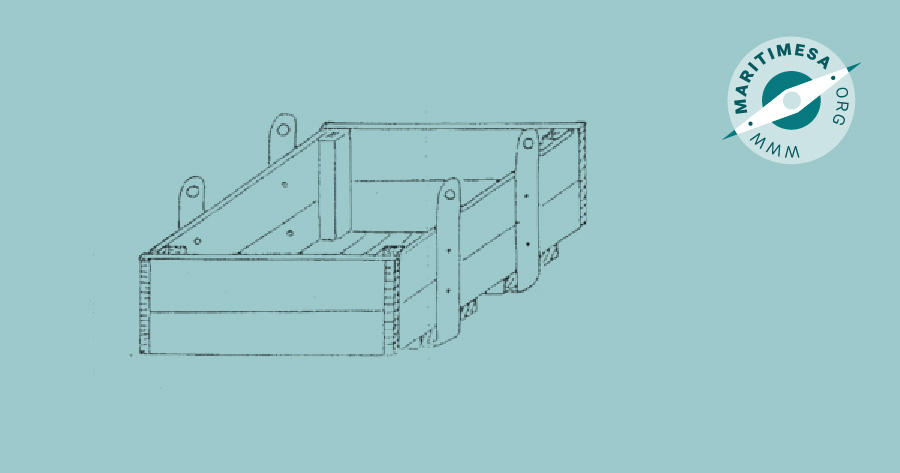
Example of an open wooden box.
Pallet spreader gear.
This consists of two double spreaders attached by four legs to a central ring. The bottom spreaders fit under the pallet, while the top spreaders protect the cargo from being damaged.
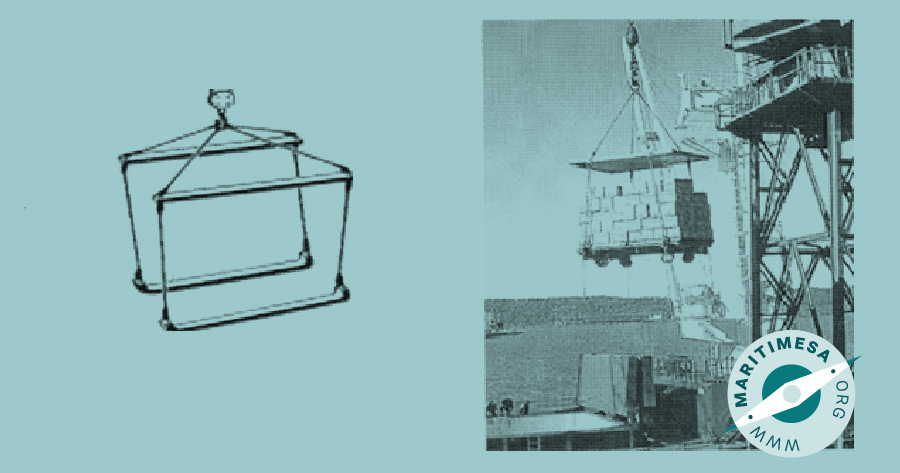
Examples of pallet spreaders.
Timber dogs.
These sharpened dogs enter the ends of the timber, and the weight of the load tends to tighten the hooks.
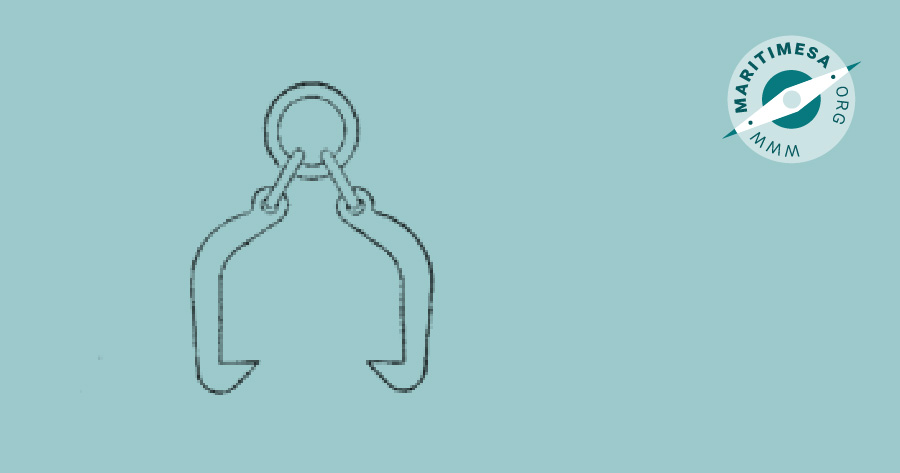
Example of timber dogs.
Bridle.
Two lengths of chain/rope fastened to a ring or shackle. The ends are then made fast to the object being lifted.
Spreader.
A metal/wooden beam to which are attached a number of slings. It is used for the lifting of long/heavy objects so that the centre does not get crushed.
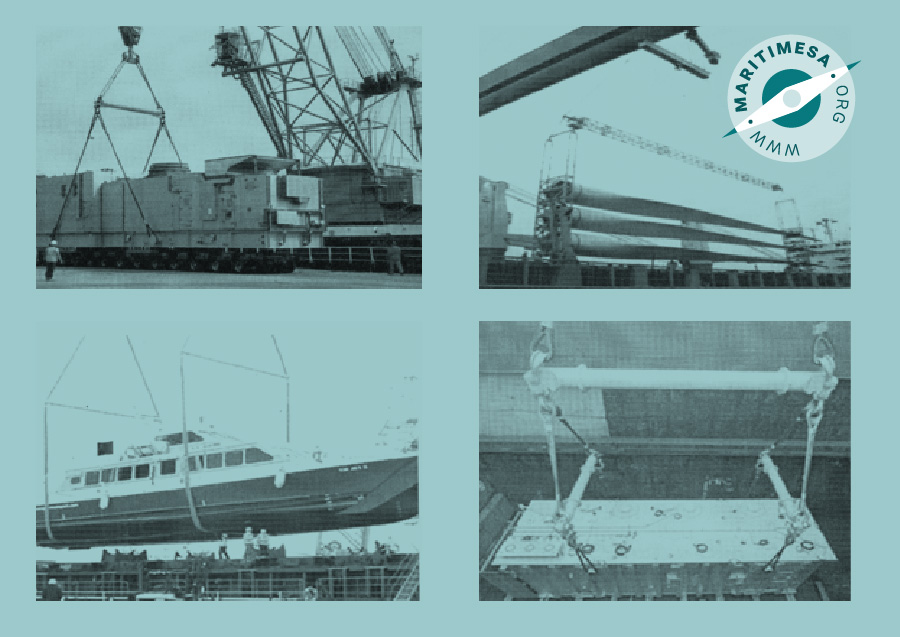
Examples of spreaders.

